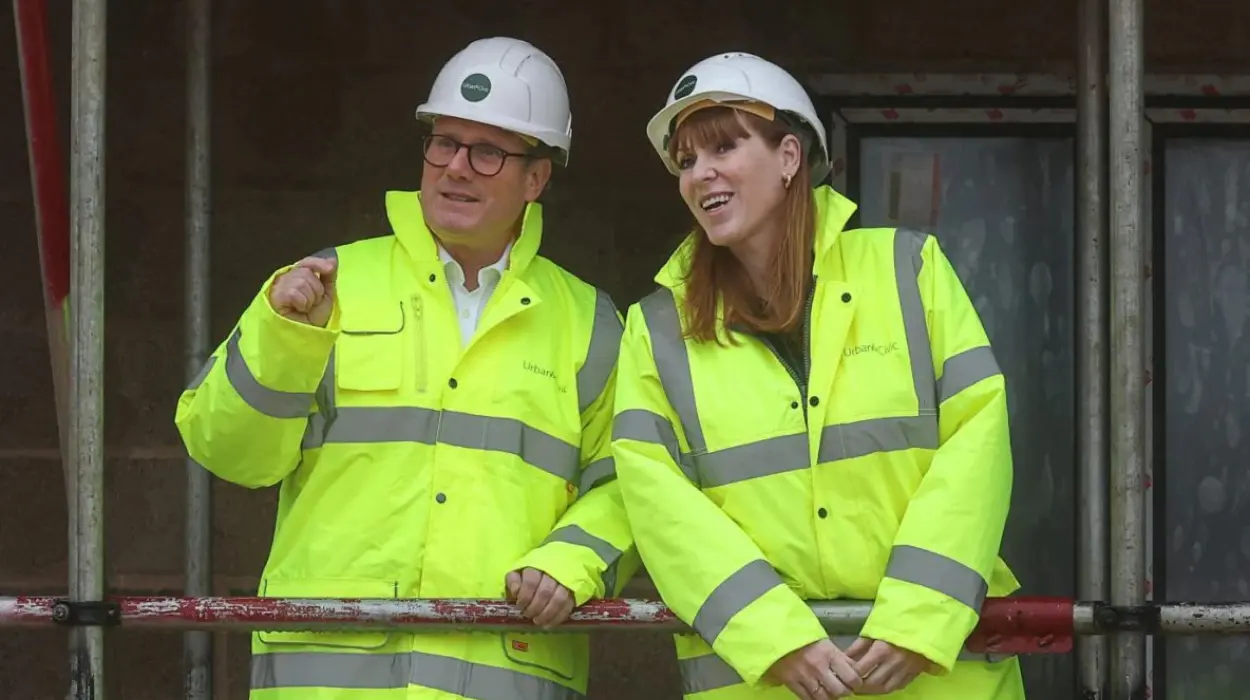UK (Parliament Politics Magazine) – Angela Rayner plans to strip councillors of power on minor housing plans, handing control to unelected officials to fast-track Labour’s housing goal.
Deputy Prime Minister Angela Rayner has proposed removing elected councillors from the decision-making process for some planning applications to streamline local housing approvals.
What did Angela Rayner say about cutting planning red tape?
Angela Rayner, also serving as Housing Secretary, aims to empower smaller builders through streamlined planning processes and funding to ramp up housing construction.
She pledged to reduce bureaucracy by transferring planning decisions to expert officers instead of councillors. Ms Rayner backed Labour’s target to build 1.5 million homes by 2029-30.
While announcing the consultation, Ms Rayner said it was time to “level the playing field” for smaller housebuilders.
She stated,
“Smaller housebuilders must be the bedrock of our Plan for Change to build 1.5 million homes, fix the housing crisis we’ve inherited, and get working people on the housing ladder.”
The deputy PM said,
“For decades the status quo has failed them and it’s time to level the playing field. Today we’re taking urgent action to make the system simpler, fairer and more cost-effective, so smaller housebuilders can play a crucial role in our journey to get Britain building.”
How will planning decisions change for small and medium developments?
Under the plans, unelected planning officials will handle decisions on developments involving up to nine homes, along with the majority of minor and technical applications, instead of councillor committees.
Developments of 10 to 49 homes will enter a new medium-sized development category, with lower expenses, eased biodiversity net gain regulations, and relief from the building safety levy.
Who will decide on planning applications under the new tier system?
Under Angela Rayner’s plans, minor developments will benefit from relaxed biodiversity net gain rules, allowing developers to contribute less toward environmental restoration.
A new National Housing Delivery Fund, expected at the spending review, will provide long-term financing options like revolving credit to help small and medium enterprises grow.
The consultations suggest shifting most minor and technical planning applications to officers, allowing committees to review only the most complex and disputed projects.
The plan divides applications into Tier A and Tier B. Tier A cases go straight to officers, while Tier B applications might be referred to councillor committees if the situation calls for it.
What did Kevin Hollinrake say about Labour’s housing and immigration policies?
Kevin Hollinrake, shadow local government secretary, stated,
“We are the party of small business and whilst in government we boosted finance and the allocation of more sites for SMEs. We have also been pushing the government to do more so welcome any workable changes to do so.”
He said,
“But as long as Labour’s immigration conveyor belt continues, those homes will be of little benefit to the British public. The reality is that Labour is stripping councillors of the right to vote on local planning applications, concreting over green belts and withdrawing support for first-time buyers. Even the OBR [Office for Budget Responsibility] say Labour won’t meet their housing target.”
Mr Hollinrake added,
“Just last week Angela Rayner was caught plotting tax hikes on working families. What she will bring is higher taxes and less say over development in your community.”
How much has the Government invested in small-site development?
The government has allocated £10 million for local councils. The fund will be used to accelerate environmental reviews. Alongside this, a £1.2 million PropTech Innovation Fund has been launched to back innovation solutions for small site development, including the use of new data tools.
A new pilot scheme in Bristol, Sheffield, and Lewisham forms part of the proposals. The plan intends to activate small sites that would not have been developed otherwise.
Labour’s housing goal
- UK Target: 1.5 million new homes by 2029
- Annual Target: ~300,000 homes/year (not achieved since the 1970s)
- Current Shortfall:
- Only ~249,000 homes were built in the highest year under the Conservatives
- Construction output has declined at the fastest rate since May 2020
- Affordable Housing:
- £11.5bn Affordable Homes Programme (carryover) + £500m extra for 5,000 more homes
- 1.3 million households on social housing waiting lists (highest since 2014)
- 160,000 council homes sold via Right to Buy in the past decade


